HYPERFORIN
- CAS NO.:11079-53-1
- Empirical Formula: C35H52O4
- Molecular Weight: 536.78
- MDL number: MFCD01861497
- EINECS: 601-000-9
- SAFETY DATA SHEET (SDS)
- Update Date: 2024-10-28 23:16:16

What is HYPERFORIN?
The Uses of HYPERFORIN
St. John’s wort is a widely consumed herbal preparation which has been claimed to have a number of medicinal properties. It contains a number of known lipid signalling mediators, including chlorogenic acid, hypericin, hyperforin, and I3,II8-biapigenin. Hyperforin exhibits two activities which may alter the action of other concurrent medications. It inhibits the activity of several CYP450 enzymes, with CYP2D6 being the most sensitive with an IC50 of about 10 μg/ml. Hyperforin is also a ligand for the steroid X receptor (SXR). Since one activity of this receptor is the induction of CYP450 expression, the exact nature of hyperforin’s drug-drug interactions must be evaluated on a case-by-case basis. However, these interactions certainly complicate its use as a human therapeutic.[Cayman Chemical]
The Uses of HYPERFORIN
Hyperforin may be used:
- as a reference standard for calibration curve generation in high-perfornamce liquid chromatography (HPLC) analysis
- to test its cytotoxic effect and apoptosis induction in mouse embryonic cells
- as a pregnane X receptor (PXR) in porcine brain capillary endothelial cells for transport assay
Definition
ChEBI: A cyclic terpene ketone that is a prenylated carbobicyclic acylphloroglucinol derivative produced by St. John's Wort, Hypericum perforatum.
General Description
Hyperforin is a phloroglucinol component of St. John′s wort and a pregnane X receptor ligand.
Biochem/physiol Actions
Hyperforin is an active antidepressant and an inhibitor of cytochrome P450 3A4 (CYP3A). It elicits antioxidant and antibacterial activity. Hyperforin is also embryotoxic and inhibits tumor proliferation. It effectively inhibits dopamine, serotonin and norepinephrine.
Properties of HYPERFORIN
| Melting point: | 79-80℃ |
| Boiling point: | 616.8±55.0 °C(Predicted) |
| alpha | D18 +41° (in ethanol) |
| Density | 1.010±0.06 g/cm3 (20 ºC 760 Torr) |
| Flash point: | 9℃ |
| storage temp. | -20°C |
| pka | 4.8 (50% aq ethanol) |
| form | solution |
| CAS DataBase Reference | 11079-53-1 |
Safety information for HYPERFORIN
| Signal word | Danger |
| Pictogram(s) |
 Flame Flammables GHS02  Skull and Crossbones Acute Toxicity GHS06  Health Hazard GHS08 |
| GHS Hazard Statements |
H225:Flammable liquids H370:Specific target organ toxicity, single exposure |
| Precautionary Statement Codes |
P210:Keep away from heat/sparks/open flames/hot surfaces. — No smoking. P280:Wear protective gloves/protective clothing/eye protection/face protection. |
Computed Descriptors for HYPERFORIN
New Products
(S)-3-Aminobutanenitrile hydrochloride 4-Methylphenylacetic acid N-Boc-D-alaninol N-BOC-D/L-ALANINOL Tert-butyl bis(2-chloroethyl)carbamate 3-Morpholino-1-(4-nitrophenyl)-5,6-dihydropyridin- 2(1H)-one Furan-2,5-Dicarboxylic Acid Tropic acid 1-Bromo-3,5-Di-Tert-Butylbenzene S-2-CHLORO PROPIONIC ACID ETHYL ISOCYANOACETATE 2-Bromo-1,3-Bis(Dimethylamino)Trimethinium Hexafluorophosphate 4-IODO BENZOIC ACID 3-NITRO-2-METHYL ANILINE 1-(2,4-DICHLOROPHENYL) ETHANAMINE (2-Hydroxyphenyl)acetonitrile 4-Bromopyrazole 2-(Cyanocyclohexyl)acetic acid 4-methoxy-3,5-dinitropyridine 1-(4-(aminomethyl)benzyl)urea hydrochloride 2-aminopropyl benzoate hydrochloride diethyl 2-(2-((tertbutoxycarbonyl)amino) ethyl)malonate tert-butyl 4- (ureidomethyl)benzylcarbamate Ethyl-2-chloro((4-methoxyphenyl)hydrazono)acetateRelated products of tetrahydrofuran
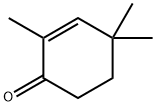
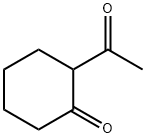


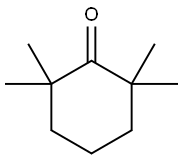

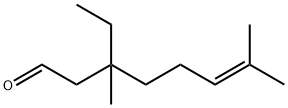
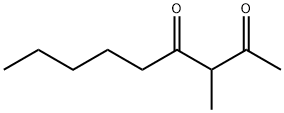
You may like
-
 Hyperforin CAS 11079-53-1View Details
Hyperforin CAS 11079-53-1View Details
11079-53-1 -
 2033-24-1 98%View Details
2033-24-1 98%View Details
2033-24-1 -
 1975-50-4 98%View Details
1975-50-4 98%View Details
1975-50-4 -
 2-HYDROXY BENZYL ALCOHOL 98%View Details
2-HYDROXY BENZYL ALCOHOL 98%View Details
90-01-7 -
 2-Chloro-1,3-Bis(Dimethylamino)Trimethinium Hexafluorophosphate 221615-75-4 98%View Details
2-Chloro-1,3-Bis(Dimethylamino)Trimethinium Hexafluorophosphate 221615-75-4 98%View Details
221615-75-4 -
 61397-56-6 CIS BROMO BENZOATE 98%View Details
61397-56-6 CIS BROMO BENZOATE 98%View Details
61397-56-6 -
 14714-50-2 (2-Hydroxyphenyl)acetonitrile 98+View Details
14714-50-2 (2-Hydroxyphenyl)acetonitrile 98+View Details
14714-50-2 -
 118753-70-1 98+View Details
118753-70-1 98+View Details
118753-70-1